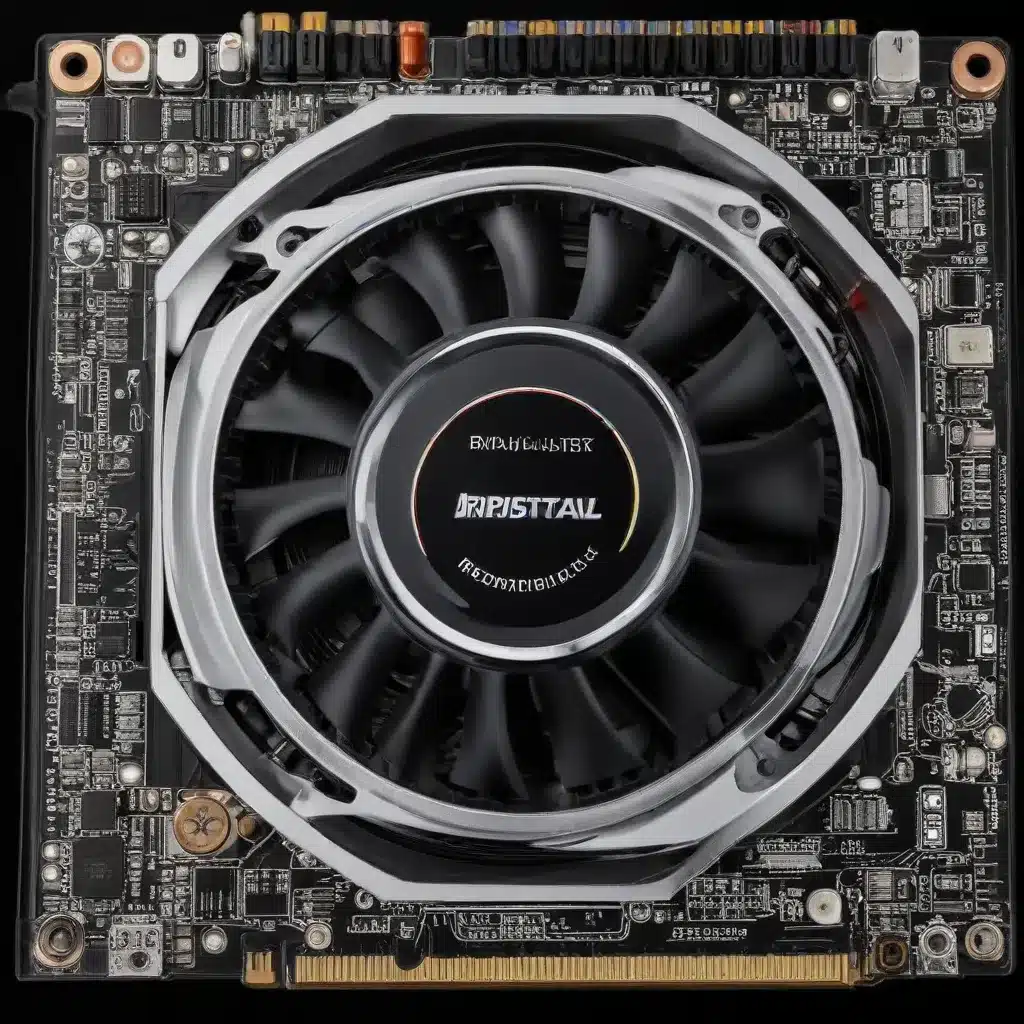
Computer Hardware
Graphics Processing Unit (GPU)
At the heart of any high-performance computing experience lies the graphics processing unit (GPU). This specialized piece of hardware is responsible for rendering the stunning visuals, smooth animations, and immersive gaming experiences we’ve come to expect from modern computers and devices. Whether you’re a PC gaming enthusiast, a creative professional, or simply someone who values a fluid and responsive interface, the GPU plays a critical role in delivering the performance you demand.
Graphics Drivers
To unleash the full potential of your GPU, it’s essential to have the right graphics drivers installed. These software components act as the bridge between your computer’s operating system and the GPU hardware, ensuring seamless communication and optimal performance. Graphics drivers are regularly updated by the GPU manufacturers, such as NVIDIA and AMD, to fix bugs, introduce new features, and enhance overall stability.
Hardware Troubleshooting
However, even with the best hardware, issues can arise that require troubleshooting. One common problem is the need to perform a clean reinstallation of your graphics drivers. This process is often necessary when you’re experiencing graphical glitches, system crashes, or a noticeable decline in performance. By removing all traces of the existing drivers and starting fresh, you can often resolve these frustrating problems and restore your system to its former glory.
Operating System (OS)
Windows
If you’re a Windows user, you have a few options when it comes to managing your graphics drivers. The most straightforward approach is to utilize the built-in Windows Device Manager to uninstall and reinstall the drivers. Alternatively, you can take advantage of the clean installation features provided by the GPU manufacturers’ own driver installation utilities.
Linux
For our Linux-based friends, the process of managing graphics drivers can be a bit more involved, as the specific steps may vary depending on your distribution. However, the general principles of uninstalling the existing drivers and performing a fresh installation remain the same. It’s always a good idea to consult the documentation or community resources specific to your Linux distro when tackling graphics driver-related issues.
macOS
Apple’s macOS ecosystem also requires careful attention to graphics drivers, especially when dealing with more powerful discrete GPUs found in certain MacBook Pro and Mac Pro models. While the process may differ from Windows or Linux, the core concepts of driver uninstallation and reinstallation apply here as well. As with any system, staying up-to-date with the latest drivers from Apple or the GPU manufacturer is crucial for maintaining optimal performance and stability.
Software Installation
Clean Reinstallation
Performing a clean reinstallation of your graphics drivers is a tried-and-true method for resolving a wide range of issues. This process involves completely removing the existing drivers from your system, including any leftover files or registry entries, before installing the latest version. By starting with a clean slate, you can ensure that any conflicting or corrupted driver components are eliminated, paving the way for a fresh and potentially more stable installation.
Driver Uninstallation
The first step in the clean reinstallation process is to uninstall your existing graphics drivers. This can be done through the Windows Device Manager, as mentioned earlier, or by using a dedicated driver removal tool like Display Driver Uninstaller (DDU). DDU is a popular third-party utility that thoroughly cleanses your system of any traces of the previous graphics drivers, making it an excellent choice for a truly clean reinstallation.
Driver Installation
Once you’ve successfully removed the old drivers, it’s time to install the latest version. Both NVIDIA and AMD provide comprehensive driver installation utilities that guide you through the process, often with options for a clean installation. These utilities handle the necessary steps, including removing any leftover files and registry entries, before installing the new drivers.
Troubleshooting Techniques
Driver Conflicts
One of the primary reasons to perform a clean reinstallation of your graphics drivers is to resolve driver conflicts. These conflicts can arise when different versions of the drivers are installed, or when the drivers are incompatible with your system’s hardware or software configuration. By starting fresh, you can eliminate these conflicts and ensure that your graphics drivers are working in harmony with the rest of your system.
System Optimization
In addition to resolving driver conflicts, a clean reinstallation of your graphics drivers can also optimize your system’s performance. Over time, as you install and uninstall various software, your system’s configuration can become cluttered and inefficient. By starting fresh with a clean driver installation, you can often see a noticeable improvement in your computer’s overall responsiveness, gaming performance, and even battery life (on laptops).
Performance Monitoring
To ensure that your clean driver reinstallation has been successful, it’s a good idea to monitor your system’s performance. This can be done through a variety of tools, such as NVIDIA’s GeForce Experience or AMD’s Radeon Software, which provide detailed insights into your GPU’s usage, temperature, and overall efficiency. By keeping a close eye on these metrics, you can quickly identify any lingering issues and take further action if necessary.
Remember, the process of performing a clean reinstallation of your graphics drivers may vary slightly depending on your operating system and the specific GPU manufacturer. However, the general principles outlined in this article should serve as a solid foundation for troubleshooting and optimizing your system’s graphics performance. If you’re ever unsure or encounter any challenges, don’t hesitate to reach out to the IT Fix team at https://itfix.org.uk/computer-repair/ for further assistance. We’re always here to help you get the most out of your technology.












